Christmas EssayChristmas is the most famous and popular festival of Christians, celebrated on December 25th every year. Christmas is celebrated worldwide, including in those countries where populations are mostly non-Christians. In some of these areas, foreign cultural influences have led the locals also to celebrate the holiday. Japan is a good example where Christmas is popular even though there are only a few Catholics. This festival has become common among all the people of different religions, and everyone loves to enjoy the moments of this festival. 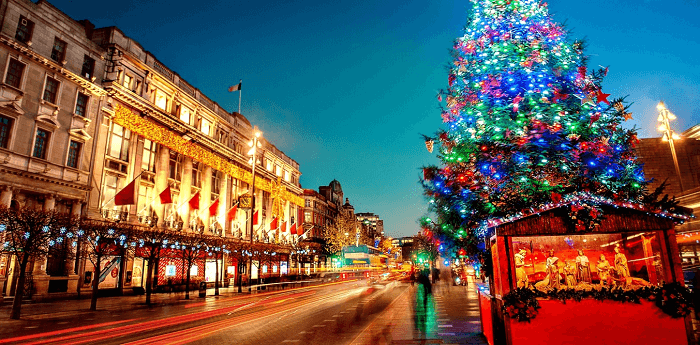
The children love the festival of Christmas as they get a lot of gifts from their Santa on that day. Children wait for Santa Claus and gifts on Christmas. Even in India, Christmas is celebrated by Christians and non-Christians with the same enthusiasm and zeal. Christians believe that Jesus Christ was born on this day and celebrate it to commemorate the birth of Jesus Christ. According to people's beliefs, Jesus was the son of God, and people also remember the lessons that Jesus Christ gave. Just as Hindus celebrate Diwali by cleaning their homes and worshipping their gods, Christians clean churches and their shops before Christmas and remember Jesus through praise on the day of Christmas. The churches and the Christmas tree are beautifully decorated with colourful lights, balls, ribbons, balloons, candles, and flowers by the people celebrating Christmas. Visiting the church and lighting candles to worship Jesus Christ is one of the essential parts of Christmas. Not only Christians but people of other religions also visit the church with friends and family, light candles, and enjoy watching the church's decorations. People celebrate this day by giving gifts to each other and also singing Christmas carols on this day. One of the most famous carols we have heard and sang is "Jingle Bell, Jingle Bell, Jingle all the way". The most beautiful thing about Christmas is that people buy clothes and gifts for the poor and needy at this festival. People visit their relatives and friends and wish each other by saying "Merry Christmas". Also, they share gifts and food during their gathering. For children, Christmas is all about gifts and Santa Claus. Children believe that Santa is their friend who brings gifts for them. They believe that Santa will come at night and leave gifts for them. Children eagerly wait for this day and Santa's gifts. The Pagan Connection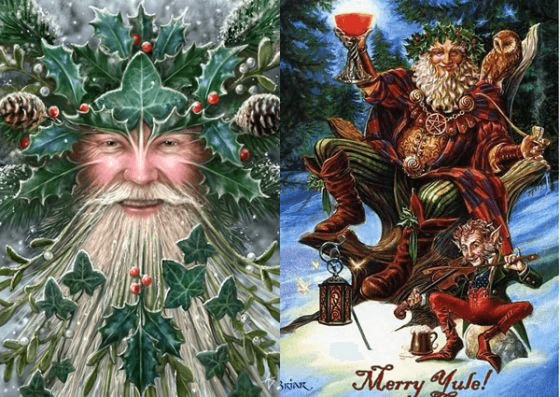
In earlier times, people used to celebrate the winter festival, and it was popular in many European Pagan cultures. For example, the Celts in Northern Europe are said to have introduced the use of mistletoe and ivy in these winter celebrations, something we associate heavily with modern Christmas. A festival named Yule used to be celebrated by Norse and Anglo Saxons in winter, and the word Yule has connected to Christmas today also. Many elements of modern Christmas celebrations are said to have originated from these Pagan Yule festivities. The Yule boar and goats were common foods that some regions still eat these foods today on Christmas. The ancient Yule log, which is not the food, was an actual wooden log from a tree that locals chose and burned as a symbol of the festival. The culture of bringing Christmas trees home and decorating them comes from medieval Livonia and also from Germany. The catholic church long resisted this custom, which was first adopted by the Lutheran protestant church and separated from Roman Catholicism. It was the year 1982 when the Christmas tree was first stood in the Vatican. Who is Santa Claus?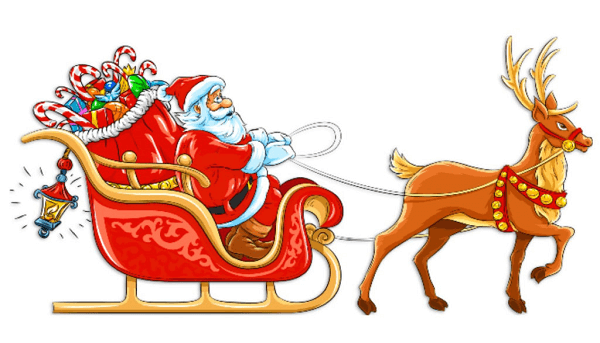
Perhaps the biggest custom of all along the Christmas tree, the figure almost everyone associates with Christmas, is Santa Claus. The story of Santa Claus started hundreds of years ago with a monk named Nicholas. It is believed he lived in the year 280 in what is now Turkey; a man admired for his piety and kindness, he gave away all his inherited wealth and travelled around helping those in need. By the renaissance, Saint Nicholas was one of the most popular saints in Europe and this perhaps contributed to his association with the celebration of Christmas. There was a custom to celebrate his feast day on the anniversary of his death which is also in December. At the end of the 18th century, Saint Nicholas became popular in American Culture. It was reported in a newspaper in New York to honour the death anniversary of Saint Nicholas, some Dutch families had gathered together in December 1873. The Dutch used to call Saint Nicholas by his nickname "Sinter Klaas", and the name Santa Claus evolved from here. He then eventually became the patron saint of New York due to the common celebration in December. The fact he was a saint connected with the giving of gifts to those in need and also being the patron saint of children. Saint Nicholas eventually became connected with the celebration of Christmas itself. A model of Santa Claus was established in a Philadelphia Shop, and it was the centre of attraction for thousands of children as they came only to see that. Soon after, many others followed the example of Santa's figure, then made their way into movies and songs and became a cultural icons connected to Christmas. His depiction in red robes was not immediate; he was usually depicted in white, green, or blue. The Red only came later with Coca-Cola's usage of him in an advertisement campaign dressing him with the brand's red colour. The reason why we associate the North Pole as his home is mostly due to Thomas Nast, an American cartoonist who created many Christmas drawings for Harper's Weekly magazine. In 1863, the presence of Reindeer in the region also led to their association with the figure of Santa Claus. Due to America's cultural dominance, this tradition of associating Santa with Christmas expanded to Christmas celebrations worldwide. But there are also other figures associated with Christmas and gift giving in other countries.
History of Christmas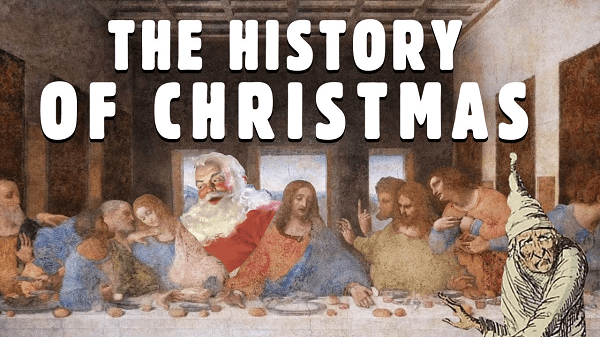
The celebration of Christmas has something of an on and off tradition, at least throughout Europe. By the time it got to North and South America as well as Africa and Asia, its celebration had been fully established in the old continent. Still, throughout the middle ages, there were some exceptions. During the middle ages, people used to celebrate a festival called epiphany, which was celebrated to focus on the visit of Magi. This was celebrated on January 6th. It was also called the Three King's Day in many countries as it was the day when three kings went to meet Jesus and also gifted him with many gifts. For example, the Spanish still attach great importance to this day, but soon Christmas began to dominate all traditions in December. The 12 days of Christmas began being celebrated in imitation of a saturnalia ritual. Emperor Charlemagne even chose to be crowned on Christmas day, a tradition followed by King Edmund and King William accordingly. With the passing of time, Christmas turned into an important Holiday. A feast was organized by the King Richard II of England in 1337, and in that feast, 300 sheep and 28 Ox were eaten by the people who attended feast. Interestingly, in those days, people used to give gifts only to the people who were in legal relationship with them. The great celebration by kings to celebrate the religious holiday perhaps influenced common people to do the same more and more as a practice. Gifts were still only exchanged on January 6th. After the December 25th feast, during the reformation of the 16-17th century in Europe, many Protestants changed the tradition of exchanging gifts on the 24th or 25th and created other made-up figures to deliver them. Some periods of banning Christmas were followed with more puritan tendencies in the church, but these were very brief, and soon, a return to typical or previous traditions took place. In the UK, Christmas Day became a bank holiday in 1834, and also, at this time, they introduced the custom of using a Christmas tree in the hands of German-born queen Charlotte, and it soon became a tradition worldwide. Other Festivals around Christmas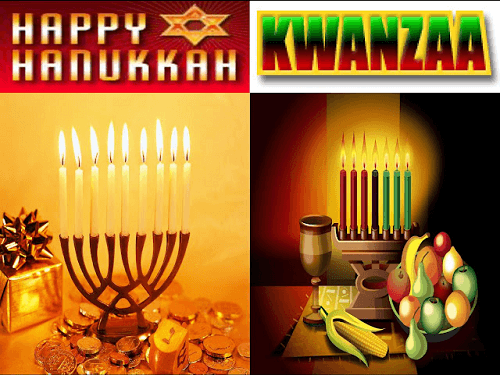
Earlier, we have mentioned alternative or similar historical myths about Santa in other countries, but there have also been some exemplary traditions or festivals for Christmas. Just like the Pagans celebrated the winter solstice before Christmas, the period of winter and the end of the year has always been a time of celebration for people worldwide, regardless of their origin and belief in Christmas itself. The Jewish celebrated Hanukkah, their festival of lights lasting for eight days and beginning on November 28th to December 6th. Dates could be different according to the Hebrew calendar. For instance, in 1929, it was from December 22nd to December 30th. Eid-al-Fitr is celebrated by Muslims, and it denotes the end of their fasting of Ramadan. It does not necessarily occur during December unless it happens according to their calendar. For instance, in the year 2000, it was at the end of December. Although curiously, Muslims recognize Jesus Christ as a prophet of God, they do not celebrate his birth. But again, keeping in mind these are official guidelines of each religion or country, any Jewish or Muslim person might choose to celebrate the secular culture part of Christmas. Kwanzaa is a cultural festival during which the African-American people celebrate their heritage. It begins on December 26th and lasts for seven days. Traditional Colors of Christmas
The three traditional colours of Christmas are Gold, Green, and Red. Religiously Red symbolizes the blood of Jesus, with Green symbolizing eternal life and Gold from one of the gifts of the wise men or the Maggie. ConclusionThis is a brief history of Christmas, what it is, how its celebration first emerged, details of what it was initially, why this specific date (i.e., December 25) was chosen, from which many modern Christmas customs come, their association with pagan festivals, the winter festival in ancient and medieval Europe, how it developed throughout time, and the history of Santa Claus. We must know all the essential information regarding Christmas. This article covers almost all Christmas-related aspects and briefly helps you understand Christmas and its story. Additionally, it covers the similar celebrations that still occur in non-religious and those from other religions, which are more or less identical to Christmas or nearby celebrated.
Next TopicEducation Essay
|
 For Videos Join Our Youtube Channel: Join Now
For Videos Join Our Youtube Channel: Join Now
Feedback
- Send your Feedback to [email protected]
Help Others, Please Share










